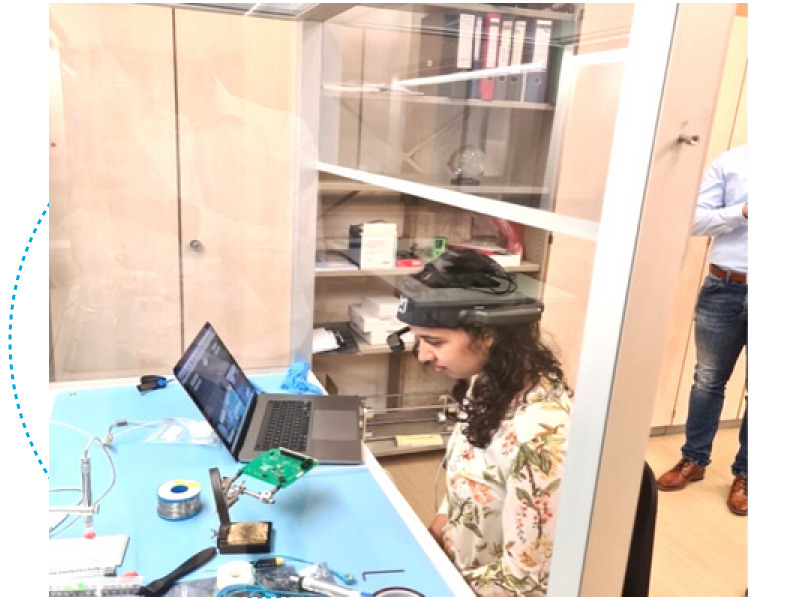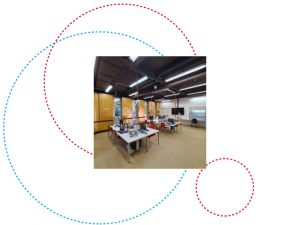At the University of Luxembourg’s Interdisciplinary Centre for Security, Reliability and Trust (SnT), students of the Interdisciplinary Space Master (ISM) can handle and develop miniaturised satellites, known as CubeSats. The CubeSatLab is a centrepiece of the ISM, and provides facilities that allow students to fully understand this revolutionary technology.
“CubeSats catalysed the NewSpace movement. Through CubeSats, we can go to space in a way that is more standardised, modular, and cost-effective. Since it became cheaper to develop space-ready technologies, this has triggered an influx of private players into the space sector. In our CubeSatLab, we can teach the ISM students through missions that can actually be accomplished here in Luxembourg,” said Dr. Jan Thoemel, Head of the CubeSatLab.
But what exactly is a CubeSat? As a miniaturised satellite with fixed dimensions, measuring 10cm on all sides, 1kg in mass, 1L in volume, and 1W in energy output. CubeSats are far less expensive to produce and launch. Over the course of three semesters, students of the ISM learn the theory behind CubeSats, have the opportunity to design a mission, and experiment with them in the laboratory.
“They can handle a CubeSat here that is near-launch-ready, which is vital for the students. It gives them the opportunity to learn what technology is being used for space missions right now, and how to properly leverage this style of satellite,” said Dr. Thoemel.
Over the past year and a half, the CubeSatLab has expanded its infrastructure offered to students. They can now use a Helmholtz cage to explore attitude control. This demonstrates how satellites can rotate in a certain direction. Students may also discover a vacuum chamber, which allows them to experiment with theelectronics used in CubeSats. These chips are often consumer electronics designed for daily use, which heat-up but normally can release heat into the Earth’s air. In space, however, these chips may overheat in the vacuum. In the chamber, students can experience this with their own hands.
The CubeSatLab has also recently been equipped with a clean cabin. Satellites are ensembled in so-called clean rooms, where the environment of clean air is guaranteed. For CubeSats, a clean cabin fulfils the same purpose. With clean cabins, students can learn how to assemble them in clean air and solder the parts, for example. “Our CubeSatLab is ready to build pilot projects that could go to space,” shared Dr. Thoemel.
In addition, the CubeSatLab features a sun simulator. This lamp produces the right composition of light for the satellite’s solar cells and produces electrical power. This technology is essential for satellite operation because defective solar cells or incorrect calculations of energy generation can lead to missions ending prematurely.
“The students are most impressed by the versatility that we have. We can address most of the aspects of satellite engineering in practice. They can learn attitude control, communication aspects and discover a satellite ground station to communicate with satellites in the orbit. They can get a complete understanding of CubeSat technology here,” said Dr. Thoemel.
Connection with Luxembourgish Space Industry
The CubeSatLab maintains a connection with the Luxembourg space industry. The laboratory is in exchange with Luxembourgish companies to benefit from their experience in practice and with innovative technologies. For example, recently Dropslap Technologies’ research and development engineers visited the CubeSatLab. SnT’s researchers evaluated using Dropslab Technologies’ combined artificial intelligence (AI) and augmented reality (AR) solution for the assembly of a hosted payload experiment. The researchers and engineers examined how assisted manufacturing can help to assemble miniaturised payloads and satellites. Exploring the possibilities of collaboration, the researchers tested their Sense software and their unique headset. Using headsets and voice control, the researchers were able to assemble the payload hands-free.

Using headsets, the researchers assembled the payload hands-free.
Such highly innovative technology is being tested in the CubeSatLab and might be used here in the future. “Assisted assembly increases the speed and quality of satellite assembly. As a support for humans, it can prevent human error,” said Dr. Thoemel. “I was impressed by how seamlessly the Sense solution integrated with our researchers and the laboratory, despite extremely limited preparation.”
Students present their Research at International Conference
Students from the CubeSatLab received a special opportunity to present their research at the 2022 International Astronautical Congress (IAC). In their second semester of the CubeSat course, students designed a complete CubeSat mission and compiled the results into a report. “The students discovered aspects during their mission that were highly innovative. They also received guidance in the scientific writing of their report, but I encouraged them to go a step further and write a scientific paper on their findings,” said Dr. Thoemel.
The mission they presented was to observe northern latitude wetlands, with a method of observation called GNSS-reflectometry. Due to climate change permafrost is vanishing and the northern latitudes are becoming increasingly wet. The students wanted to observe waterways with CubeSats, as they can carry out missions with a much smaller budget than larger satellites. The applied reflectometry technology uses GPS signals reflection on Earth’s surface to detect waterways on Earth.
Vladyslav Bohlachov, a student of the ISM, presented the mission, entitled “Daffodil”, at the IAC. “The presentations were great. Vladyslav Bohlachov had quite an audience that wanted to know how this mission works,” shared Dr. Thoemel. Dr. Michaele Jamrozik, former ISM student, presented a detail of their similar mission “Goldcrest”. The mission required computational resources on board of the CubeSat. She solved this problem and ensured the mission’s feasibility.
“The International Astronautical Congress is the largest space conference in the world. This was an important motivator for the students. At the IAC you see major innovations and new mission in space. Directors of major space agencies such as NASA and ESA participate. Students have gained a very broad view of various missions,” added Dr. Thoemel.
